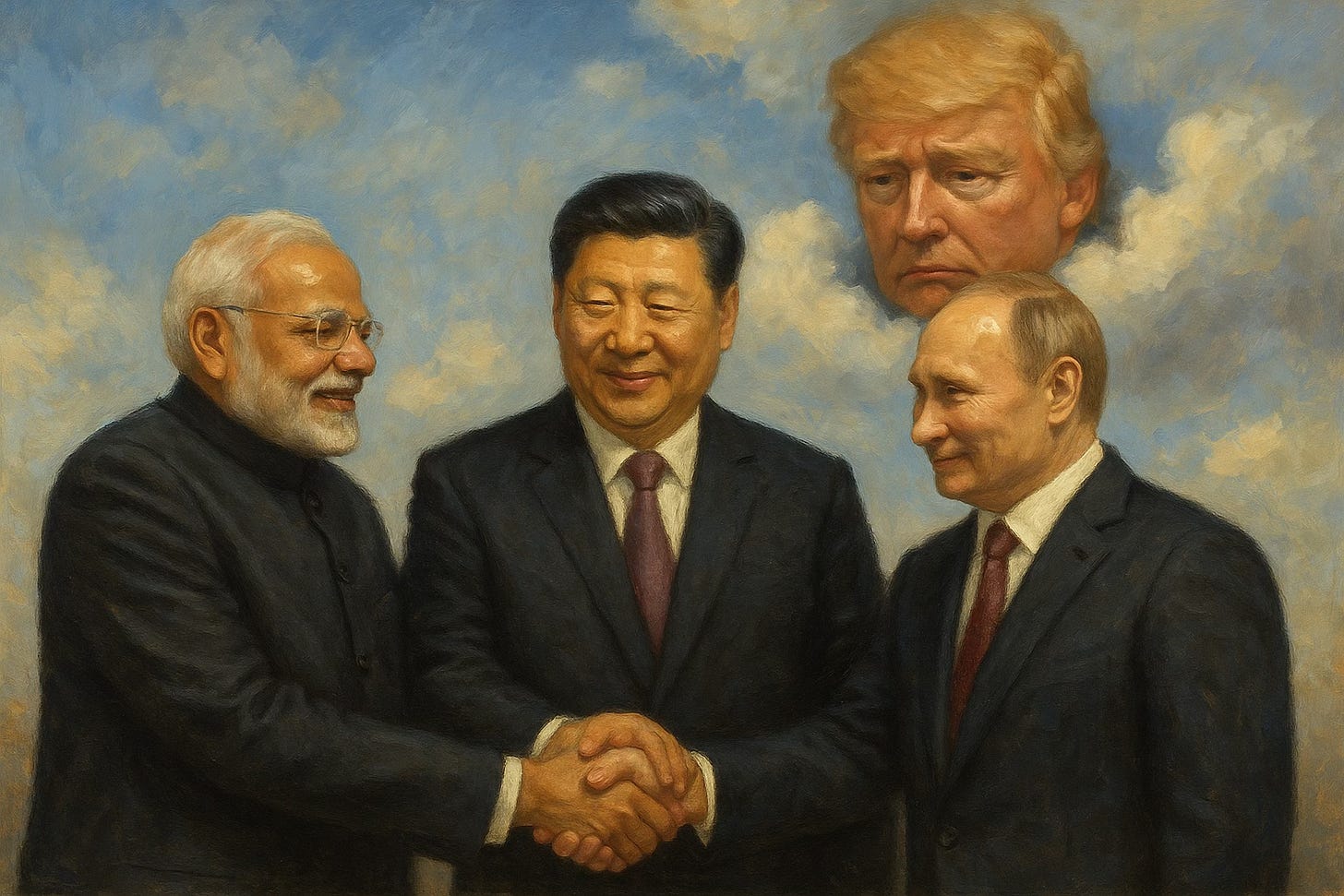Trump Hands Xi a Gift
A Policy That Split Allies, Boosted BRICS, and Gave Xi the Spotlight.
Modi lands in Beijing for the first time in seven years. Stands next to Xi and Putin.
Trump's 50% tariff on India was supposed to break them. Instead it pushed Modi onto a plane to China.
A neat photo for anyone betting against American hegemony.
Not an axis. Three governments with conflicting interests.
India faces 50% tariffs: 25% reciprocal plus another 25% for buying Russian oil. Brazil gets the same treatment. China sits at 30%. South Africa too. Russia avoids a direct hit for now, but the pressure channels through India's energy purchases.
Larry Summers said the obvious part out loud: unite friends, divide adversaries. The current approach does the reverse. Modi shows up in Beijing, shakes hands with Xi, and Putin watches.
India's exports to the United States are under 2% of GDP. The economy grew 7.8% last quarter, the fastest in five quarters. Inflation is 2.82%. The Reserve Bank has room to cut. The government is simplifying GST from four tiers to two by October.
China's economy is 8.5 times Russia's by nominal GDP. Russia sells raw materials. China sells finished goods. The dependency runs one way.
The India–China border remains militarized. Tens of thousands of troops along the LAC. A disengagement agreement late last year changed little. The dispute didn't move. India's trade deficit with China reached $99 billion in 2024. Delhi still rejects Belt and Road because it runs through Kashmir. Beijing still backs Pakistan.
Modi's timing was deliberate. Arrived in Tianjin from Tokyo. Left before the Victory Day parade. Message: India has options. Strategic autonomy updated as multi-alignment.
BRICS was fading before the tariffs. Xi skipped the Rio summit in July 2025. Then the tariffs hit. De-dollar talk returned.
The SCO summit produced the Tianjin Declaration condemning unilateral actions and echoing One Earth, One Family, One Future. No free trade zone. No common currency. No unified military command.
Delhi's finance team announced GST changes. Most 12% rates cut to 5%. Many 28% rates trimmed to 18%. Tax changes start in April. Support packages are planned for sectors hit by tariffs.
Trump's trade war gave Xi room to expand the SCO brief, handed Putin relevance he lacked, and let Modi state in public what Delhi has long believed: India answers to nobody.



https://open.substack.com/pub/thiagodearagao/p/five-things-to-expect-from-the-trumpxi?r=2di31u&utm_medium=ios